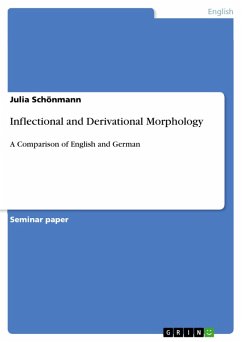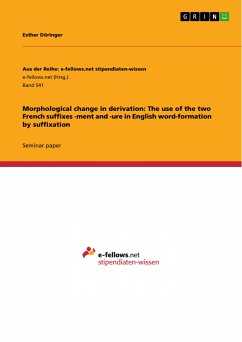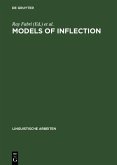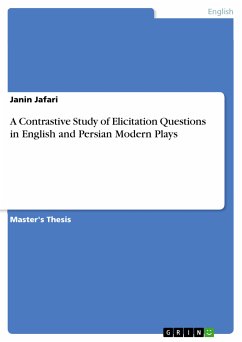Seminar paper from the year 2014 in the subject English Language and Literature Studies - Linguistics, grade: 1,7, University of Heidelberg (Institut für Übersetzen und Dolmetschen), language: English, abstract: Generally, Kortmann defines Contrastive Linguistics as the parallel comparison of two languages concerning their language parameters. According to him, it is especially important to identify separate bundles with structural differences and find the relation between them, the so-called "Kontrastbündel" (contrast bundles). Each one of these bundles can be deduced from the construction plan of the contrastive language. In this regard, Kortmann starts his analysis by comparing his purpose of Contrastive Linguistics to its original use. He refers to the fact that in the early 40s till 60s these language differences were considered the reason for the problems occurring when learning a foreign language. Hence, Contrastive Linguistics was primarily important for pedagogical use. The systematic comparison of two languages was supposed to improve the learner's and teacher's understanding of the foreign language by for example predicting mistakes often made. In this context, Kortmann sees the previously mentioned Contrastive Hypothesis from Lado as a good explanation for the main factors which trigger contrasts. The Contrastive Hypothesis indicates that similarities between the native language (L1) and the foreign language (L2) lead to an easy and fast learning process whereas differences lead to difficulties and are the main reason for making mistakes. Thus, the basic idea of the Contrastive Hypothesis is the transfer of the characteristics of the native language to the foreign language. Depending on whether this transfer promotes or represses the learning process, it is considered a positive or negative transfer. A negative transfer is also referred to as interference. The most important types of interference are substitution (1), over-differentiation, under-differentiation, over-representation and under-representation (2). Here, Kortmann comments that according to this basic assumption of Contrastive Linguistics only substitution, over-differentiation and under-differentiation can trigger mistakes.
Dieser Download kann aus rechtlichen Gründen nur mit Rechnungsadresse in A, B, BG, CY, CZ, D, DK, EW, E, FIN, F, GR, HR, H, IRL, I, LT, L, LR, M, NL, PL, P, R, S, SLO, SK ausgeliefert werden.









